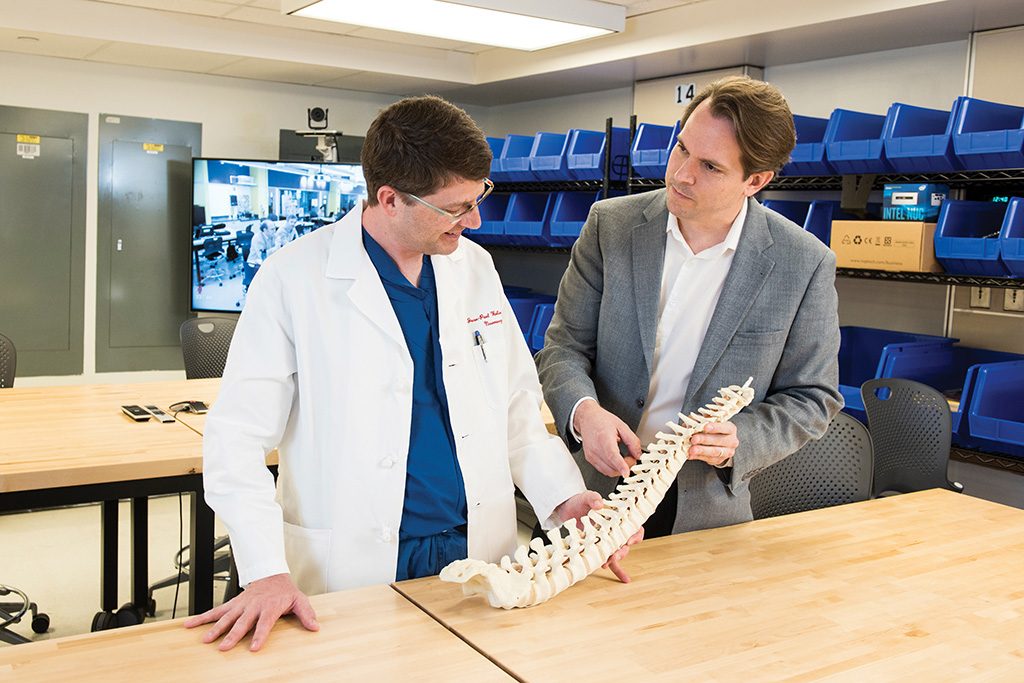
On the seventh floor of the Johns Hopkins Hospital’s Carnegie Building, in what once was a postoperative recovery room, biomedical engineering students are designing tools, algorithms, and imaging systems that could shape the future of surgery. A giant video screen is on 24/7, linking the new Carnegie Center for Surgical Innovation to the BME Design Studio on the Homewood campus.
For Jeff Siewerdsen, a professor of biomedical engineering, it was not hard to imagine such a synergistic connection between engineers and surgeons. “Clinical collaboration has always been the inspiration for our research,” says Siewerdsen, who worked with neurosurgeon Jean-Paul Wolinsky to create the center.
“This space is right in the hospital,” says Whiting School Dean Ed Schlesinger. “Many engineers and clinicians are collaborating across the country. But at Hopkins, the relationship is woven into the fabric of our schools… That’s what makes this uniquely Hopkins.”
Siewerdsen and Wolinsky’s vision for the laboratory began four years ago, when the Johns Hopkins Hospital’s main operating rooms were being moved from Carnegie to the new Zayed and Bloomberg clinical towers. The pair proposed increasing collaborations by converting vacated space into a joint education and research center—creating a nationally unique, hospital-based surgery and biomedical engineering lab.
Siewerdsen, who holds appointments in BME, Neurosurgery, Oncology, Computer Science, Radiology and Radiological Science, and the Armstrong Institute for Patient Safety and Quality, focuses his research on imaging systems to improve surgical precision, enhance patient safety, and enable new surgical approaches. He also heads the I-STAR Lab—a collaboration focusing on new systems for X-ray imaging and cone-beam CT, image registration, and 3-D image reconstruction for surgery, radiotherapy, and diagnostic radiology.
Several faculty members plan to bring their engineering expertise to the center: Xingde Li, of biomedical engineering, who leads a program in biophotonics; Muyinatu Lediju Bell, assistant professor of electrical and computer engineering, who focuses on ultrasound imaging; Arvind Pathak, associate professor of radiology and radiological science, who works on multiscale neurovascular imaging; and Wojciech Zbijewski, research faculty member in biomedical engineering with a focus on high-resolution imaging of bone health.




